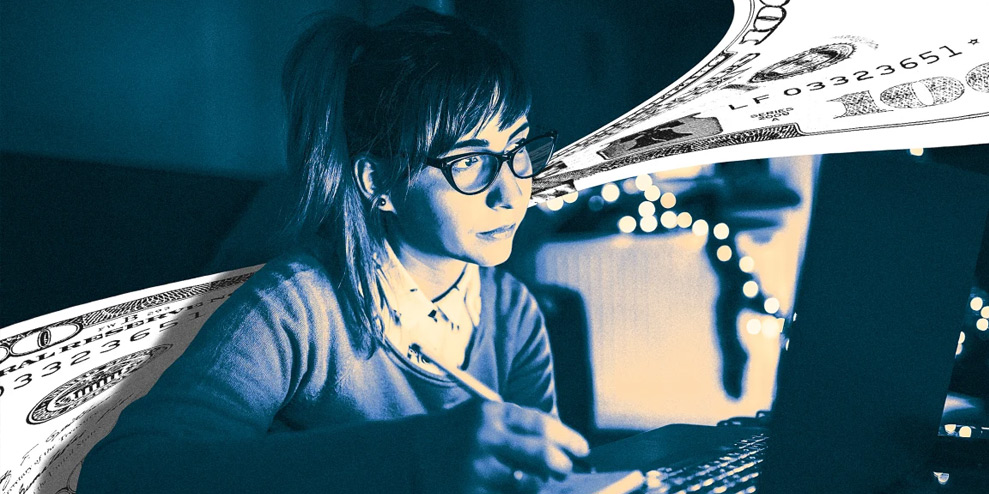How have freelance designers survived the pandemic? A new survey of more than 11,000 of them across 147 countries tells a bleak story.
The research was conducted by 99designs, an Australian-based platform that connects freelance designers and clients. It found that a third had difficulty finding steady work in 2020, a quarter had at least one project canceled or put on hold, and 27% of their clients have cut budgets. One particularly sad stat was that 22% of respondents had a client ghost them, presumably after they’d put in some work.
In many ways, freelancers and gig workers have been more vulnerable than full-time employees during the pandemic. In France, Germany, and the Netherlands, among other European countries, the government paid a proportion of workers’ salaries to keep them employed. But these programs generally didn’t reach many freelance workers. The 99designs research found that only 16% of freelancers surveyed received any financial support from their government in 2020. An estimated 42% of respondents said they were actively looking for employment, and 32% had considered looking for work outside design as a result of COVID-19-related hardships.
The struggles of freelance designers mirror those facing other creative freelancers in fields ranging from journalism to video-editing to virtual assistant work. It’s not necessarily that the work has dried up. In many sectors, companies have laid off full-time workers in favor of hiring cheaper, short-term freelancers instead. According to The Wall Street Journal, many employers are asking freelancers to do more work for lower pay, and the fact that the job market is now flooded with freelancers means that workers have little room to negotiate.
In terms of overall earnings, more than a third of freelance designers surveyed expected to earn less this year than they did in 2019. About half of them expected to earn more from freelancing this year than last year, but in many cases, they were compensating for lost wages from other work. Only about an eighth of all those surveyed expect to see an increase in their salary.
So what’s it like working as a freelance designer during the pandemic? Well, it hasn’t been particularly satisfying: 31% said they were unsatisfied with their work, an increase of 12% from last year. Some of the upsides of freelancing—like working your own schedule and in the location of your choosing—disappeared this year, since the pandemic rendered most of the world homebound and without childcare.
Some designers turned toward designing for good causes, with 38% doing creative work for social justice organizations. But 70% of that work was pro bono, which is shockingly high given how much financial hardship designers experienced this year. On the one hand, it’s noble that so many designers were willing to donate their time and talent for a good cause. On the other, working for free can have a corrosive effect on the industry, devaluing work that is already often seen as frivolous. It is possible that some of these designers were willing to work for free in the hopes that it would eventually lead to paid work.
Working from home this year was also more challenging than in years past. Nearly half of respondents had to balance extra childcare and homeschooling responsibilities, and nearly a quarter had to work fewer hours because they were taking care of family members. In one of the more surprising findings in the report, 48% of respondents said that childcare and homeschool responsibilities had a positive impact on their career (compared to 27% who reported a negative impact). The authors of the report suggest this is because freelancers are pros at working flexibly. But another possible explanation is that 70% of respondents identified as male, and data from other research suggests that women have been far more negatively impacted by the pandemic, partly because they tend to bear more childcare responsibility.
The design sector, as a whole, has been pummeled by the pandemic, and agencies have dealt with financial hardships. Creative agencies have conducted waves of layoffs throughout the crisis. This means that agencies may actually be more likely to hire freelancers in the future, since they are cheaper to bring on than long-term, salaried staff. But that might not necessarily be a good thing, especially for the many designers who are looking for stable, full-time jobs with benefits. As with many other aspects of society, the pandemic has exposed inequities in the design world: While some designers choose to freelance because they like the flexibility and are properly compensated, many others are struggling.
This article first appeared in mail.google.com


